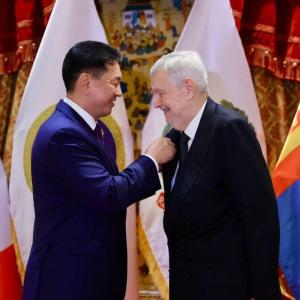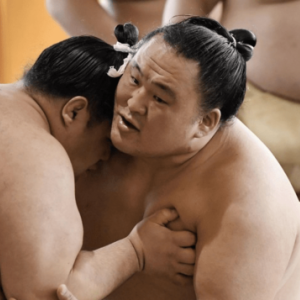The People of Mongolia who gave their ‘All for Victory’
The Mongol Messenger
Ulaanbaatar /MONTSAME/ The 75th anniversary of the Victory
in the Great Patriotic War fell on May 8, 2020. The war that is embedded deeply
in the histories of Mongolian People's Republic (MPR) and the Union of Soviet
Socialist Republics (USSR) was a tremendous challenge that revealed the firm
friendship between the two nations.
On June 22, 1941, when the army of the Nazi Germany invaded
Soviet Union, Members of the Central Committee of the Mongolian People's
Revolutionary Party, Members of the State Baga Khural, and the People’s Council
of Ministers urgently convened together and announced the nation will exploit the
potential to help Soviet Union win the war in compliance with the 1936 MPR-USSR
Protocol of Mutual Assistance, detesting the action of the Fascist aggressors.
This proves Mongolia was the first country to officially declare to the world
its affiliation to the anti-fascist coalition.
A day after the war began, Mongolian people started a
movement under the slogan ‘All for Victory, All to the Front’ to voluntarily
help the Red Army, supporting the Soviet army during the 4 years of the war.
‘Revolutionary Mongolia’, ‘Mongolian Arat’, and others
Over the war years, Mongolian people have sent over 740
trains of contributions to the front in six batches. The first batch of
contributions for the Red Army including clothing sufficient for 15 thousand
soldiers was sent in December 1941. The gift surely was a help in defeating the
German soldiers in -40°C in the Moscow raion.
Moreover, the people of Mongolia made donations to form the ‘Revolutionary Mongolia’ brigade of 53 tanks for the Red Army and 4.5 million tugriks, 300 kilograms of gold, and 100 thousand dollars that had been collected were transferred to the Russian Foreign Trade Bank. Another military equipment Mongolia gifted to the Soviet soldiers was the Mongolian Arat squadron or the Mongolian People's Air Squadron. The squadron of 12 La-5 fighters successfully performed its task of liberating Eastern European countries from Hitler’s invaders. Incidentally, aside from the ‘NormandyNeman’ squadron of French volunteer pilots, ‘Revolutionary Mongolia’ was the first military formation funded by foreign contributions in the Red Army.

Even though 53 tanks and 12 aircrafts are small
contributions compared to the military equipment the allies, USA and Britain,
have supplied to the Soviet Union through Lend Lease, it should be noted that
some types of materials of strategic importance Mongolia has provided equaled
those supplied by USA and Britain combined. The economies of USA that had a
population of 132 million and Great Britain that had 51 million people during the
Second World War in no way can be compared to that of the MPR that had around
800 thousand people at the time. However, a record shows that USA has supplied
665 thousand tons of canned food to Soviet Union over the war years, while the
herders of Mongolia have sent around 500 thousand tons, almost the same amount,
of meat. According to a more detailed record, Mongolia has provided 700
thousand cattle and around 5 million sheep and goats to Soviet Union over the 4
years of the war and the tushonka, canned stewed meat, that was popular among
the soldiers was made out of Mongolian livestock meat. Also, one out of every
five overcoats of Red Army soldiers was made of the 64 thousand tons of wool
sent from Mongolia, which gifted tens of thousands of leather and sheepskin
clothing to the front, while USA has supplied 54 thousand tons of wool.

Moreover, Mongolia had the only deposit of tungsten, a
heavy metal that was in great demand for making cannon projectiles capable of
smashing Germany’s Tiger and Leopard tanks, closest to Soviet Union. These are
part of the many facts Russian websites have published on the occasion of the
70th anniversary of the victory in the Great Patriotic War.
Mongolian horses that reached Berlin
Gifting geldings for the use of the Soviet Red Army was an
important part of Mongolia’s movement to assist the front. Mongolian herders
sold a total of 485 thousand horses and gifted 32,538 fine ones to the front.
Even though the countries involved in the Second World War
were relatively mechanized, weapons and projectiles were moved on only geldings
given the muddy fields of the Eastern Front. Most of the 9 million horses the
Red Army, having lost half of its geldings in only a year into the war, was
left with were youngsters. The only countries that were able to provide Soviet
Union with horses in that difficult time were Mongolia and USA. However, it was
almost impossible to bring horses from USA by sea, let alone buy geldings at
low prices in a capitalist society and that made Mongolia the only country that
could supply horses aside from Soviet Republics.

Mongolia’s gift of 32 thousand horses was sufficient for
the formation of six divisions and one of every five horses used in the Red
Army was a Mongolian horse /517.5 thousand in total/. “The tough Mongolian
horses reached Berlin together with Soviet tanks” Soviet Army General Issa
Aleksandrovich Pliev recalled about how the tough and strong Mongolian horses
that do not require special care bore the heavy burdens of the war. Although
the 375 thousand vehicles provided from USA through Lend Lease are said to have
helped the Red Army better its maneuvers, the over 500 thousand horses sent
from Mongolia have surely contributed to the victory. Russian publisher Alexey
Volynets highlights that the horses supplied from Mongolia through Lend Lease
were such important and timely assistance that was a huge help on the front
line.

Mongolian People’s Revolutionary Army
The Mongolian People’s Revolutionary Army’s contribution to
the victory, in addition to the moral and material support rendered by the
people of Mongolia, is unforgettable. It was responsible for supporting the
million Soviet soldiers deployed to the Far Eastern and Eastern Siberian
regions, for the militarist Japanese army became more likely to attack the
Soviet Far East after the invasion of Soviet Union by Hitler’s soldiers.
Accordingly, MPR authorities of the time at which Mongolia was giving support
against the militarist Japan, increased the country’s military personnel
fourfold, spending 50 percent of the budget on military spending. The country’s
army increased to 55,000 soldiers during that time and tank and artillery
brigades, squadrons, as well as sapper and medical units were additionally
formed and mechanized. It is written on the topwar.ru website of Russia that
the Mongolian People’s Revolutionary Army’s handling of some of the million
Kwantung soldiers in Manchuria allowed the deployment of several Soviet
divisions to the battlefields in Europe from the Far East.

Lastly, another encouraging act by Mongolia was its assistance to Soviet expats in Mongolia. The country provided monthly allowances of 20- 100 tugriks and homes for the families of Soviet citizens who had been enlisted in the Red Army during residency in Mongolia, especially the ones who were disabled or lost their lives in the war. These are the wholehearted, effortful contributions of the people of Mongolia who have given their ‘All for Victory and the Front’.
 Ulaanbaatar
Ulaanbaatar














































































